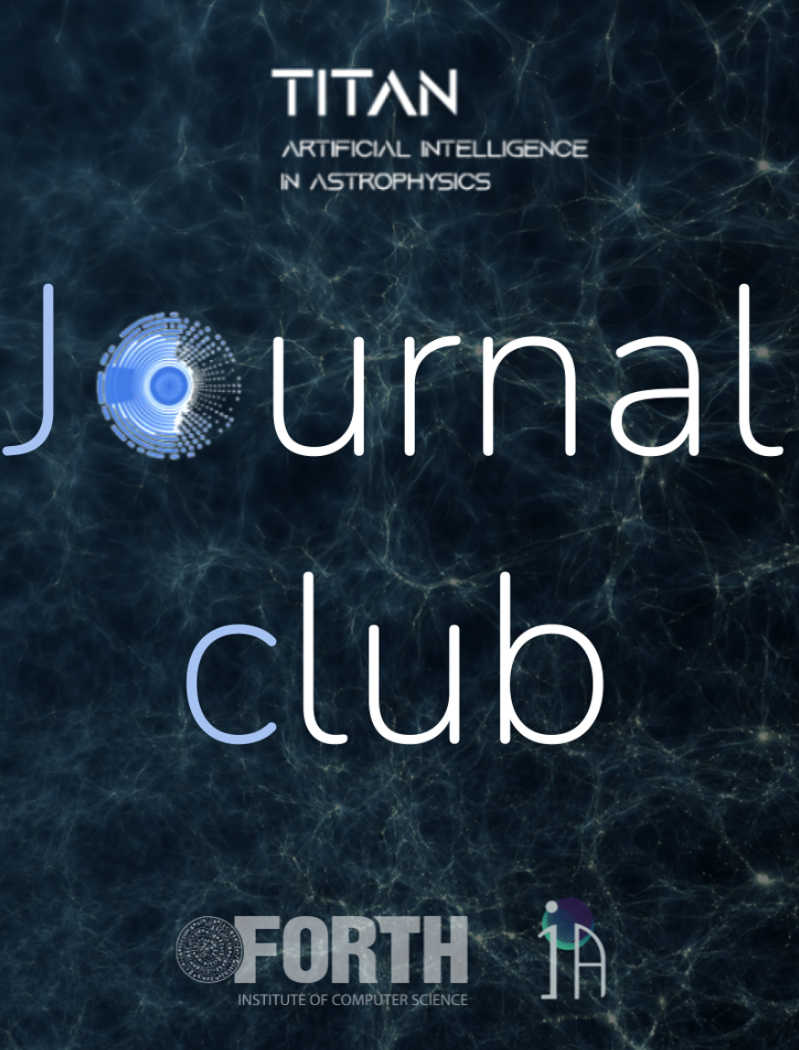
Speaker : Pauline Gorbatchev (PhD Student)
Date : 11th of December
Location: Orphanoudakis meeting room
Paper Abstract: Simulations of the dark matter distribution across the Universe are crucial for analyzing data from cosmological surveys. However, NN-body simulations are computationally expensive, and many cost-effective alternatives, such as lognormal random fields, fail to accurately capture the statistics of smaller, non-linear scales. In this work, we introduce Psi-GAN, a machine learning model designed to transform a two-dimensional lognormal dark matter density field into a more realistic field. Psi-GAN is continuously conditional, allowing it to generate realistic realizations of the dark matter density field across a range of cosmologies and redshifts within z∈[0,3]z∈[0,3]. The model is trained as a generative adversarial network using 2,000 simulation boxes from the Quijote simulation suite. Psi-GAN incorporates a novel critic architecture that leverages the power spectrum to discriminate between real and generated samples. The model demonstrates agreement with NN-body simulations over a range of redshifts and cosmologies and outperforms the lognormal approximation in all tests of non-linear structure. Notably, Psi-GAN reproduces the power spectrum up to wavenumbers of 1 hh Mpc−1−1 and achieves bispectrum accuracy within approximately 5 percent of target NN-body simulations. This improved ability to model non-linear structure offers the potential for more robust constraints on cosmological parameters when applied to techniques such as simulation-based inference.
